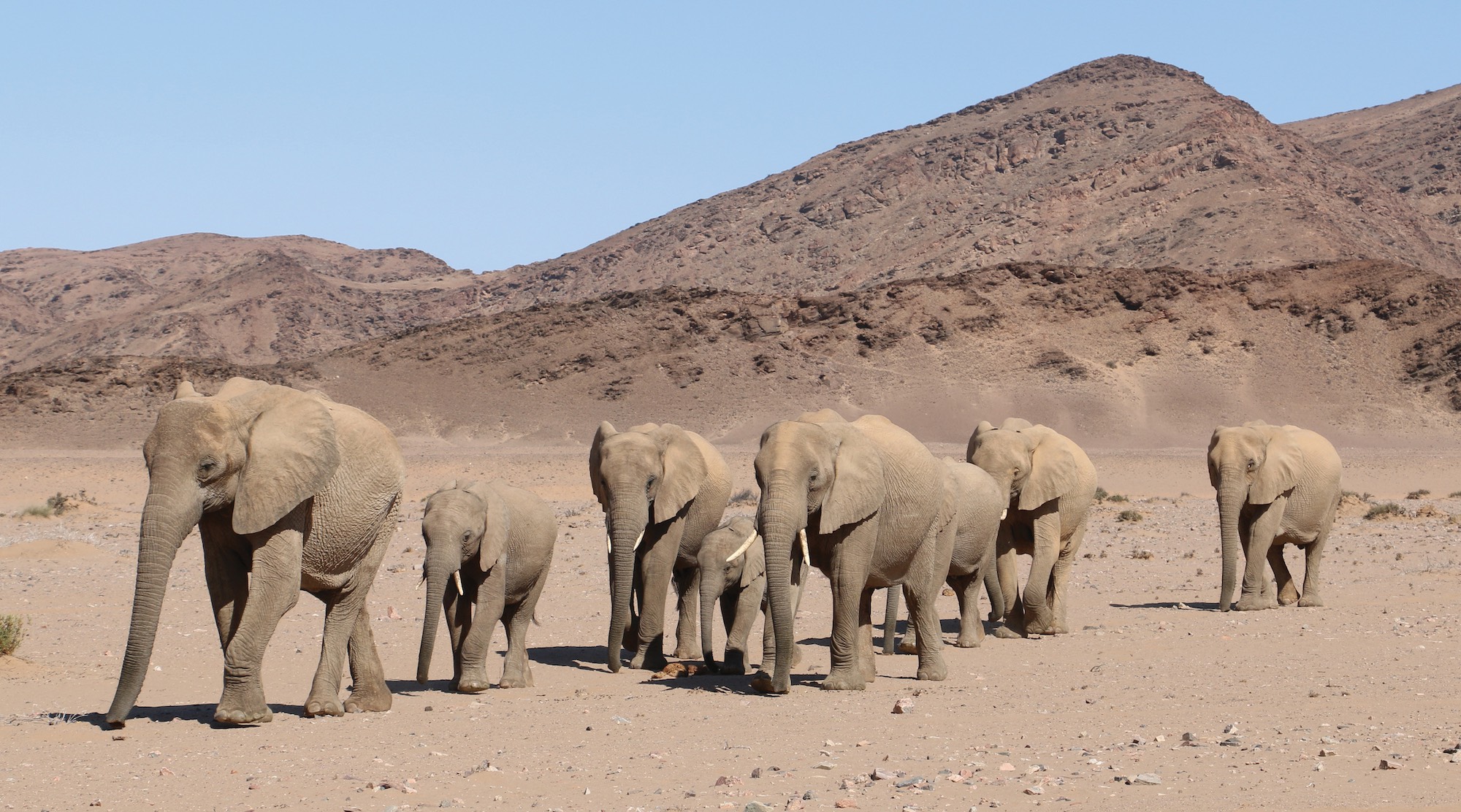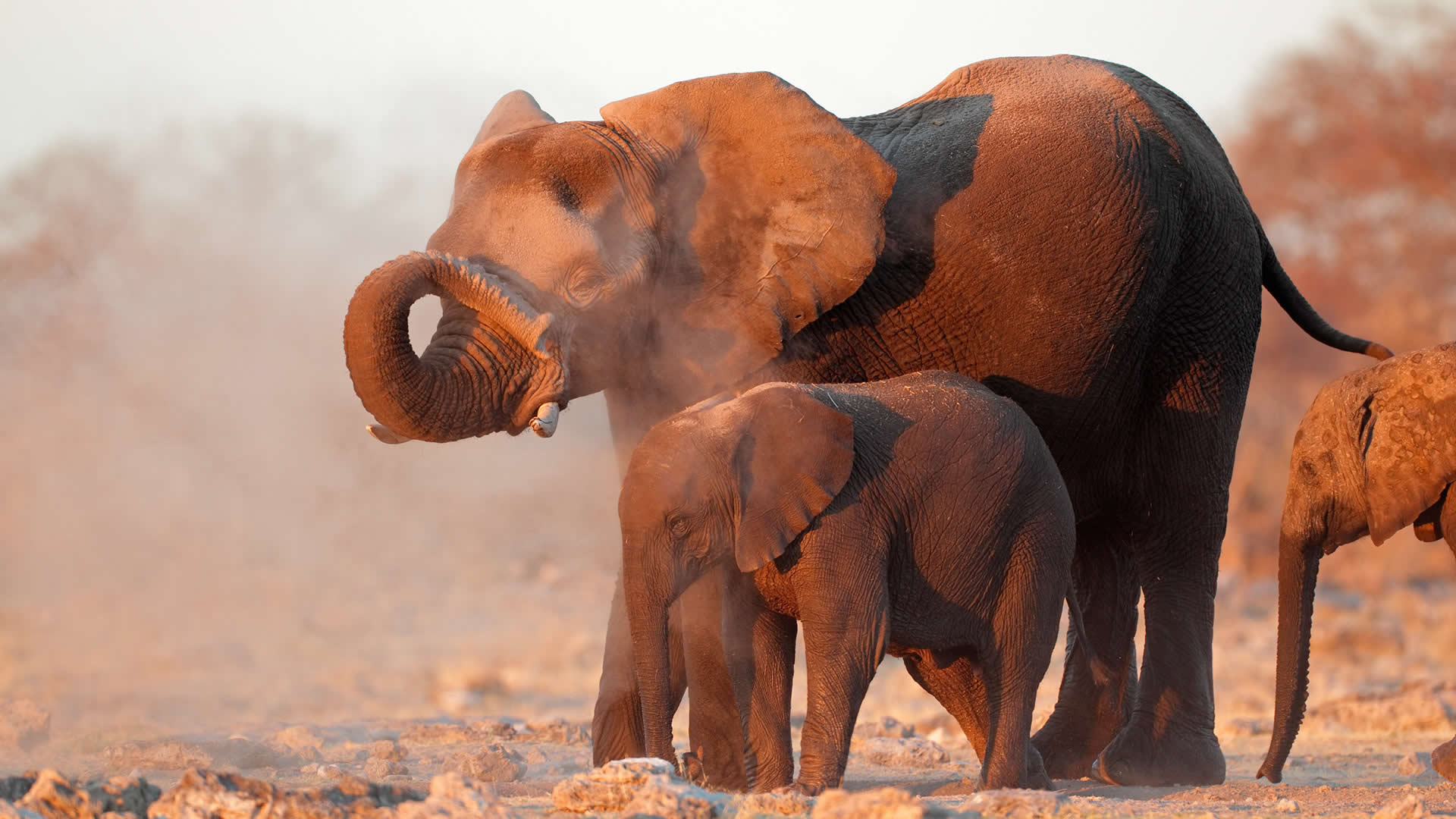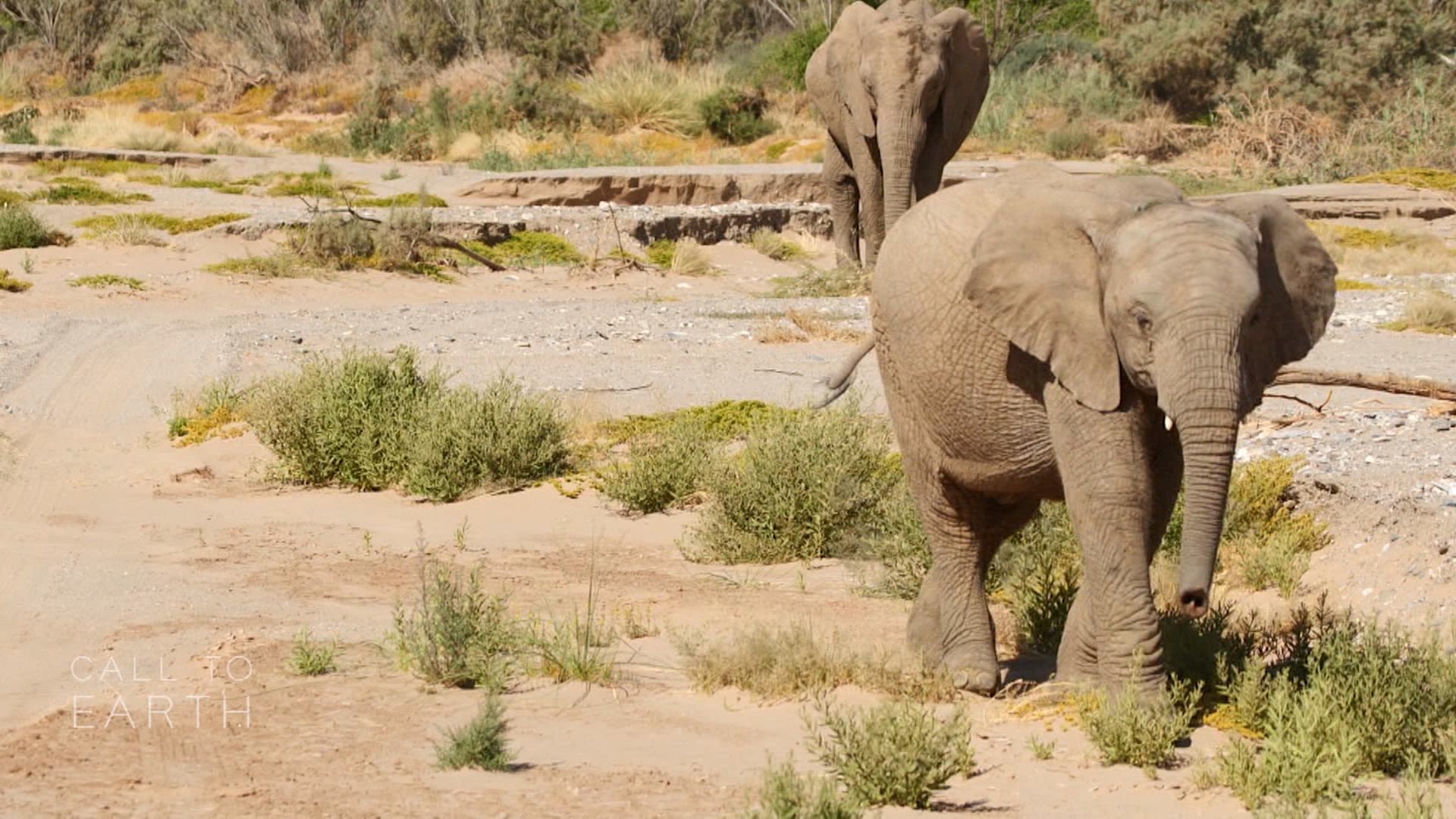When entering Windhoek, there’s a good chance you will see some of Africa’s iconic wildlife such as lions, giraffes, and the desert elephants of Namibia. Seeing the Namib desert elephants should be high on your agenda because of how amazing they have adapted to the harsh conditions.
While not officially a subspecies separate from their savannah cousins, desert elephants are unique in their learned behaviours. This article tells you more about these desert elephants including their population, where to find them and what they eat.
Table of Contents
Savannah Elephants VS Desert Elephants of Namibia Difference?
You don’t need to be told what an elephant looks like, but you want to know the difference between savannah elephants and desert elephants. For a while, desert elephants were considered a separate subspecies from their savannah counterparts, but this is no longer the case.
There are no genetic differences between elephants living in savannah areas like Etosha National Park and those roaming in Namib desert. Desert elephants are simply African bush elephants (Loxodonta africana) with unique characteristics. They have made the Namib desert their home and exhibit small adaptations to the extreme temperatures and terrain of the region. The desert elephants have smaller bodies and longer legs than their bush-dwelling cousins. They also have bigger feet, which allows them to walk with more ease across the very soft desert sand. This adaptation is very useful because these Elephants have been known to travel up to 124 miles in search of water.

Desert elephants. Photo/ Conservation Namibia.
Whereas savannah elephants are known to leave a trail of destruction in their wake, desert elephants take care not to damage any trees or bushes on their path. This is quite understandable because why would they destroy bushes and trees they come across in an environment where all plants are precious? I’ll fill you in on a secret: Elephants are among the most intelligent mammals on earth.
Where Are the Desert Elephants Located?
The desert elephants of Namibia mainly live in arid and semi-arid regions encompassing 115,154 kilometres square of rocky mountains and gravel plains in the northwest part of the country. The elephants can be found delicately grazing on the sparse vegetation within the main riverbeds.

Elephants in the wild. Photo/ Oyster Worldwide.
If you want to see the desert elephants together with other animals such as zebras, giraffes and the black rhino, head north, into Damaraland and towards the Skeleton Coast National Park. Seeing an elephant in the wild is a humbling experience, but spotting Namibia’s desert elephants is extraordinary.
How Many Desert Elephants Are Left in Namibia?
During the 18th century, the elephant population in the Namib region was over 2,500. Unfortunately, a large part of the elephant population perished in the second half of the 19th century. According to Elephant Human Relations Aid (EHRA), the population of desert elephants in Namibia is approximately 150 at the moment.
The total number of desert elephants living in the southern ephemeral rivers of the northern Erongo and southern Kunene region is 62. Since 2016, the population of Ugab river elephants has decreased by 32 percent due to human-caused reasons and challenging environmental conditions.
According to EHRA Namibia, 9 out of 14 calves born died in the Ugab River and Huab River combined from 2014 to 2018. It is estimated that 28 African elephants are lost annually due to poaching, which causes severe impacts on the large mammals.
What Do Desert Elephants Eat?
The desert elephants of Namibia feed on a variety of flora found in the Namib region. The list includes flowers, shoots, bulbs, fruits, grasses, tuberous roots and bark.

The feeding habit of the desert elephants is highly varied. Photo/ CNN.
Desert elephants specifically spend time eating Camel Thorn trees and Ana trees. They also browse Mopane trees when necessary and find Tamarisk trees for salt intake. During the rainy season, you will spot them feeding mostly on grass which is usually available. To sum up these elephants feeding habit, their diet is highly varied and depends on the availability of food from season to season.
What Countries Have Desert Elephants?
Desert-dwelling elephants were once widespread in Africa; however, their population have reduced and they are now found in just two places in the whole world, Namibia and Mali. They were forced into their desert habitat by human population expansion.








